Breadcrumb
- Russian River Salmon and Steelhead Monitoring Program
- Projects & Research
- Habitat Enhancement Monitoring
Habitat Enhancement Monitoring
Our work helps to identify limiting factors to salmonids and inform restoration priorities. The projects below highlight two cases where we conducted biological and environmental monitoring before and after habitat enhancement work to help determine project effectiveness.
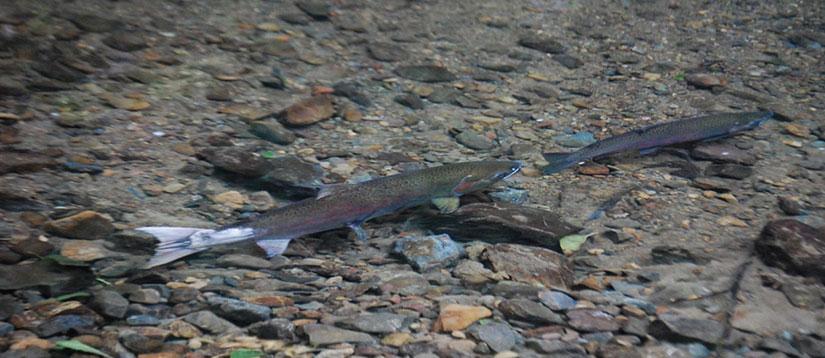
Mill Creek Dam Fish Passage Project
Mill Creek is a major tributary to the Russian River that harbors some of the best refugia for endangered coho salmon and threatened steelhead trout within the watershed. For many decades, migratory fish access in Mill Creek and its tributary streams was severely impeded by a large flashboard dam that blocked passage to approximately 11.2 miles of prime spawning and rearing habitat. CA Sea Grant's spawning distribution data showed that this barrier blocked fish from the perennial reaches of stream in the upper watershed except under a limited and rare window of winter flow conditions, in most years confining them to the lower reach that goes dry during the summer months. This dam was identified by NOAA Fisheries as “the highest priority barrier within the Russian River [coho] population for remediation.”
Trout Unlimited and Prunuske Chatham, Inc. completed a project to restore passage over and around the dam through the construction of a roughened ramp and low-gradient side channel in October 2016. Located, literally, in the backyard of several residential properties—and with many site constraints—this project required years of careful planning, stakeholder collaboration and negotiations. The project photo documentary illustrates each step in the construction process.
The project was implemented with funding from NOAA Restoration Center’s Community-based Restoration Program, the CA Department of Fish and Wildlife’s Fisheries Restoration Grant Program and Sonoma Water, and would not have been possible without the support and cooperation of neighboring landowners.
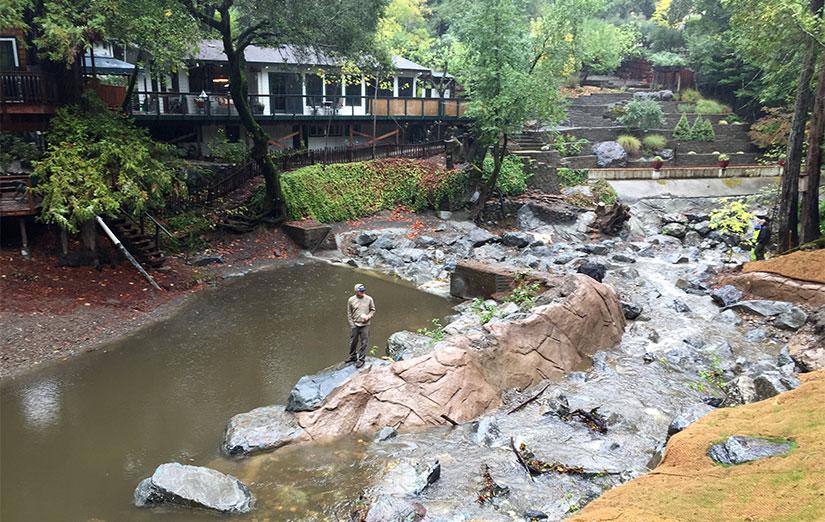
Our program conducted pre- and post-project monitoring. We observed numerous coho salmon spawning upstream of the former dam site within weeks of project completion. The maps below show the distribution of coho salmon redds (nests) in relation to the historic dam in the years before and after the project.
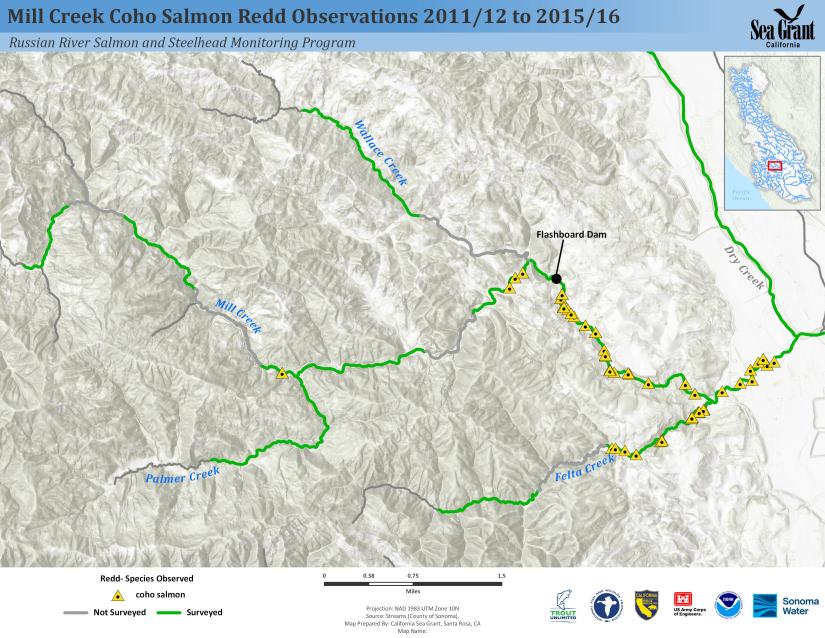
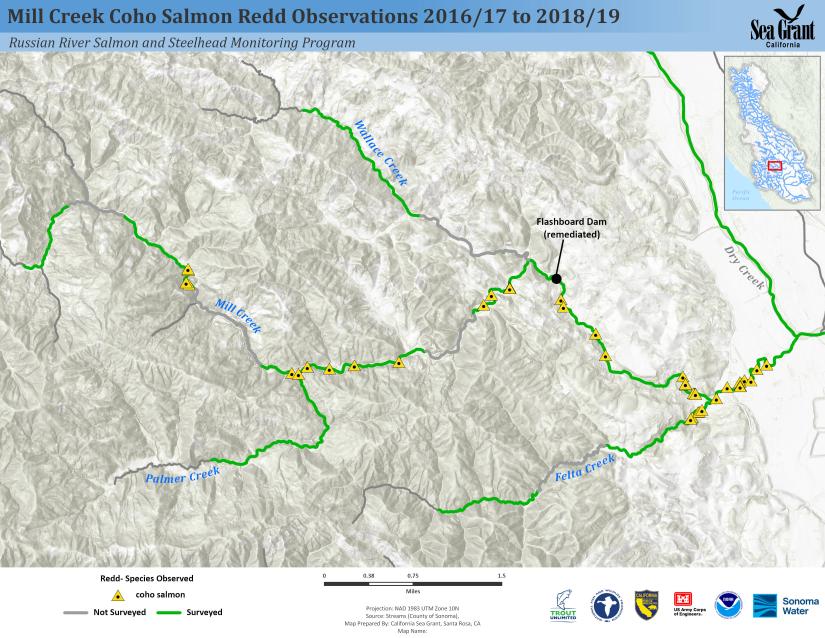
News: DAM REMEDIATION SPELLS VICTORY FOR RUSSIAN RIVER SALMON
Green Valley Creek Winter Refugia Enhancement Project
During winter storm events, juvenile coho salmon and other fish need shelter to protect them from high flows. Historically, large woody debris and inundated floodplains provided refuge but, throughout the Russian River watershed, much of the large wood has been removed from the channel over several decades and channelization and incision has caused most streams to be cut-off from their historic floodplains. In an effort to address this concern, the Gold Ridge RCD, NOAA Fisheries, CA Department of Fish and Wildlife, Sonoma Water, California Coastal Conservancy, and local landowners partnered to implement a winter refugia, off-channel enhancement project on Green Valley Creek.
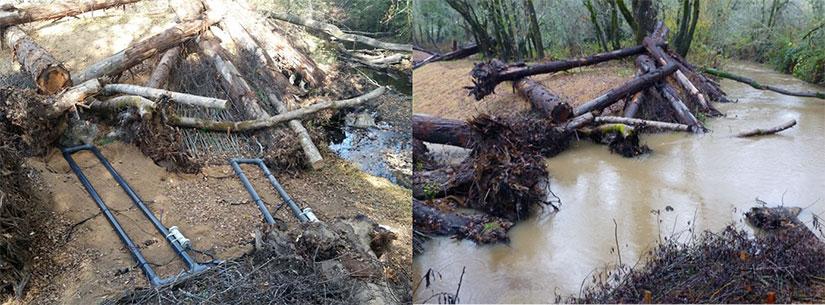
In the fall of 2014, a seasonally-flooded side channel was constructed adjacent to the main stream channel and several large wood structures were installed to add complexity and shelter. CA Sea Grant' used PIT-tag technology to evaluate fish use of the project reach before and after project implementation, in order to document the effectiveness of the enhancement project in providing seasonal refuge for juvenile coho salmon. A full discussion of monitoring methods and outcomes can be found in the Green Valley Creek Winter Refugia Enhancement Project Monitoring Final Report.
- Conservation Hatchery Program
- Salmonid Status & Trends
- Streamflow & Drought
- Habitat Enhancement Monitoring